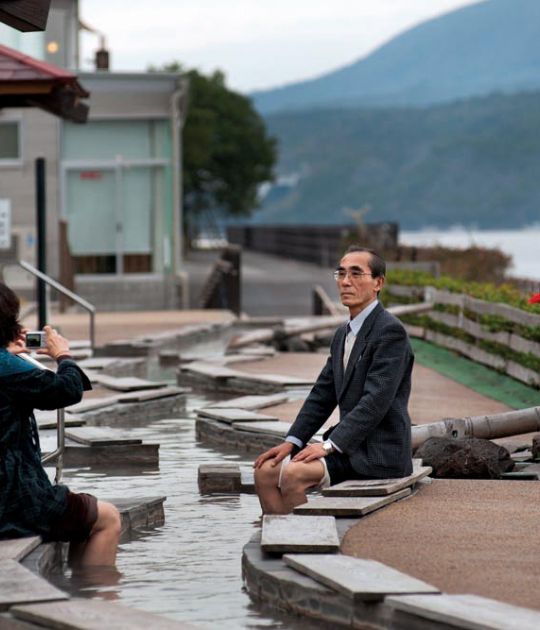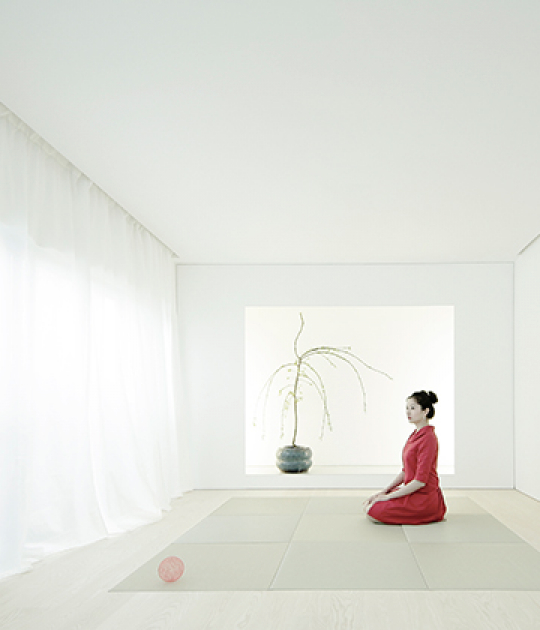Looiersgracht 60 will be presenting from 22 June–10 July ‘Japan, Archipelago of the House’, a travelling exhibition that explores the Japanese house within its physical, cultural and social context.
The idea of the Japanese house captivates and intrigues. It is as celebrated as it is vague and indistinct; a phenomenon that has fascinated Europeans for a long time. It is often misunderstood and engaged with out of context, frequently being used to add an air of novelty to international publications. The houses are treated like objects of wonder, plucked out of their environs and placed onto pages that often do not paint a complete picture of their scope and background. Although often praised for the absence of ornament and their simplicity, their habitability is frequently doubted by the very people who admire them for their creativity.
Minimal and homogeneous, the exhibition echoes the simplicity of Japanese design. The exhibition was especially conceived for travel with a lightweight display system made entirely of poplar plywood, a material often used in Japanese houses and based on the measurement of traditional Japanese tatami.
In order to provide clarity the exhibition has been divided into the following three sections:
YESTERDAY’S HOUSES
This section is comprised of fourteen case studies of famous twentieth century homes built between 1933 and 1984. Although not exhaustive this selection includes houses by famous architects such as Tadao Ando and Pritzker Prize winner Toyo Ito.
The 14 houses, summarily presented, paint a large and loyal panorama of the architectural typology in the field of housing. They are considered important precedents due not only to the living conditions they support, but also how they respond to the natural and built environment.
TOKYO HOUSES
A photographic documentary by Jeremie Souteyrat comprised of thirty-six house “portraits” in their environments. A combination of cultural, economic and geographic factors such as a high population density, the high cost of land and earthquakes have resulted in a sense of transience in the architecture. Made of lightweight and transparent materials, the Tokyo house is more of a fleeting fashion statement than a lasting edifice.
TODAY’S HOUSES
Twenty case studies of houses built between 1993 and 2013, by a variety of established architects including Shigeru Ban Architects, Yasushi Horibe, Atelier Bow Wow and Mikan.
View threshold, economy of space, and extreme functionality are some of the themes that are being explored through interviews with their inhabitants and the architects, drawings, maps, photos and videos. Working to meet the personal requirements of the inhabitants within the geographical space afforded, the projects in this section feature striking structural innovations developed as a result of a commitment to the intended social life of the buildings.
The idea of the Japanese house captivates and intrigues. It is as celebrated as it is vague and indistinct; a phenomenon that has fascinated Europeans for a long time. It is often misunderstood and engaged with out of context, frequently being used to add an air of novelty to international publications. The houses are treated like objects of wonder, plucked out of their environs and placed onto pages that often do not paint a complete picture of their scope and background. Although often praised for the absence of ornament and their simplicity, their habitability is frequently doubted by the very people who admire them for their creativity.
Minimal and homogeneous, the exhibition echoes the simplicity of Japanese design. The exhibition was especially conceived for travel with a lightweight display system made entirely of poplar plywood, a material often used in Japanese houses and based on the measurement of traditional Japanese tatami.
In order to provide clarity the exhibition has been divided into the following three sections:
YESTERDAY’S HOUSES
This section is comprised of fourteen case studies of famous twentieth century homes built between 1933 and 1984. Although not exhaustive this selection includes houses by famous architects such as Tadao Ando and Pritzker Prize winner Toyo Ito.
The 14 houses, summarily presented, paint a large and loyal panorama of the architectural typology in the field of housing. They are considered important precedents due not only to the living conditions they support, but also how they respond to the natural and built environment.
TOKYO HOUSES
A photographic documentary by Jeremie Souteyrat comprised of thirty-six house “portraits” in their environments. A combination of cultural, economic and geographic factors such as a high population density, the high cost of land and earthquakes have resulted in a sense of transience in the architecture. Made of lightweight and transparent materials, the Tokyo house is more of a fleeting fashion statement than a lasting edifice.
TODAY’S HOUSES
Twenty case studies of houses built between 1993 and 2013, by a variety of established architects including Shigeru Ban Architects, Yasushi Horibe, Atelier Bow Wow and Mikan.
View threshold, economy of space, and extreme functionality are some of the themes that are being explored through interviews with their inhabitants and the architects, drawings, maps, photos and videos. Working to meet the personal requirements of the inhabitants within the geographical space afforded, the projects in this section feature striking structural innovations developed as a result of a commitment to the intended social life of the buildings.














































